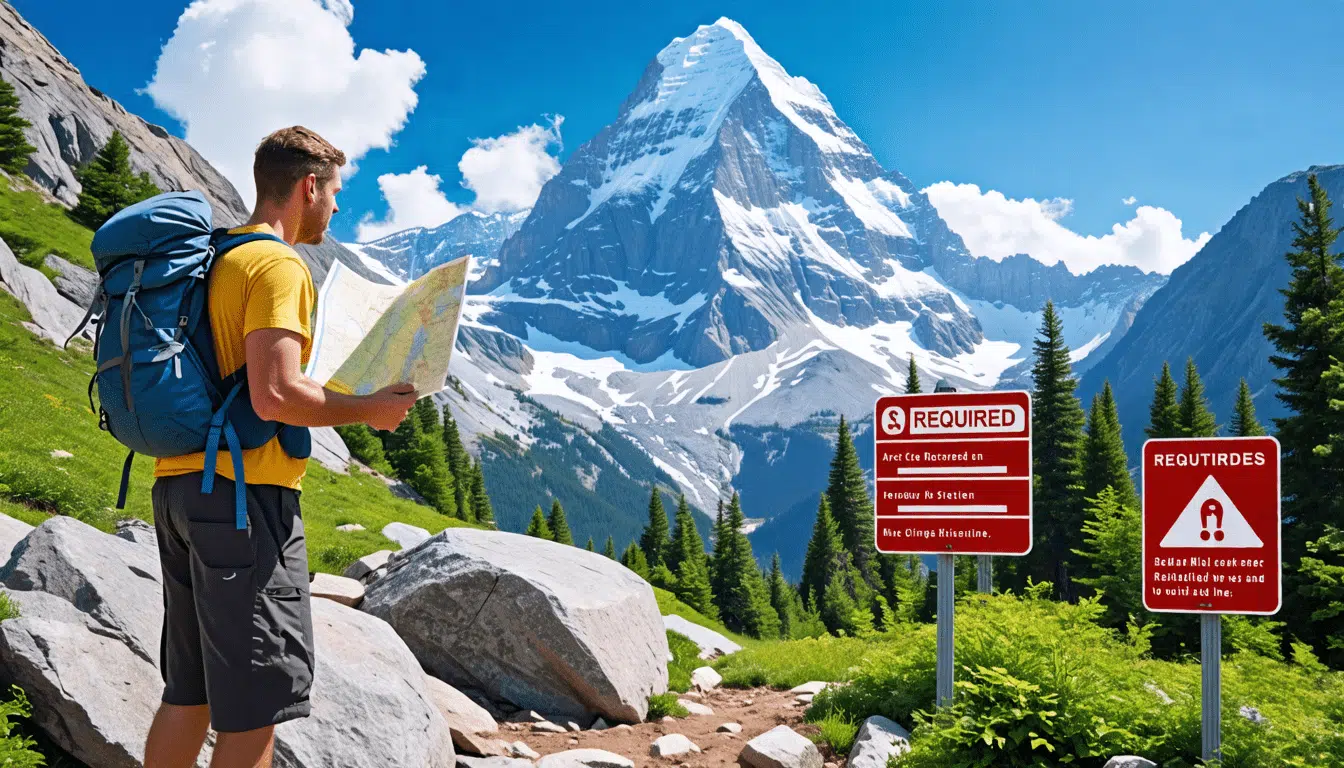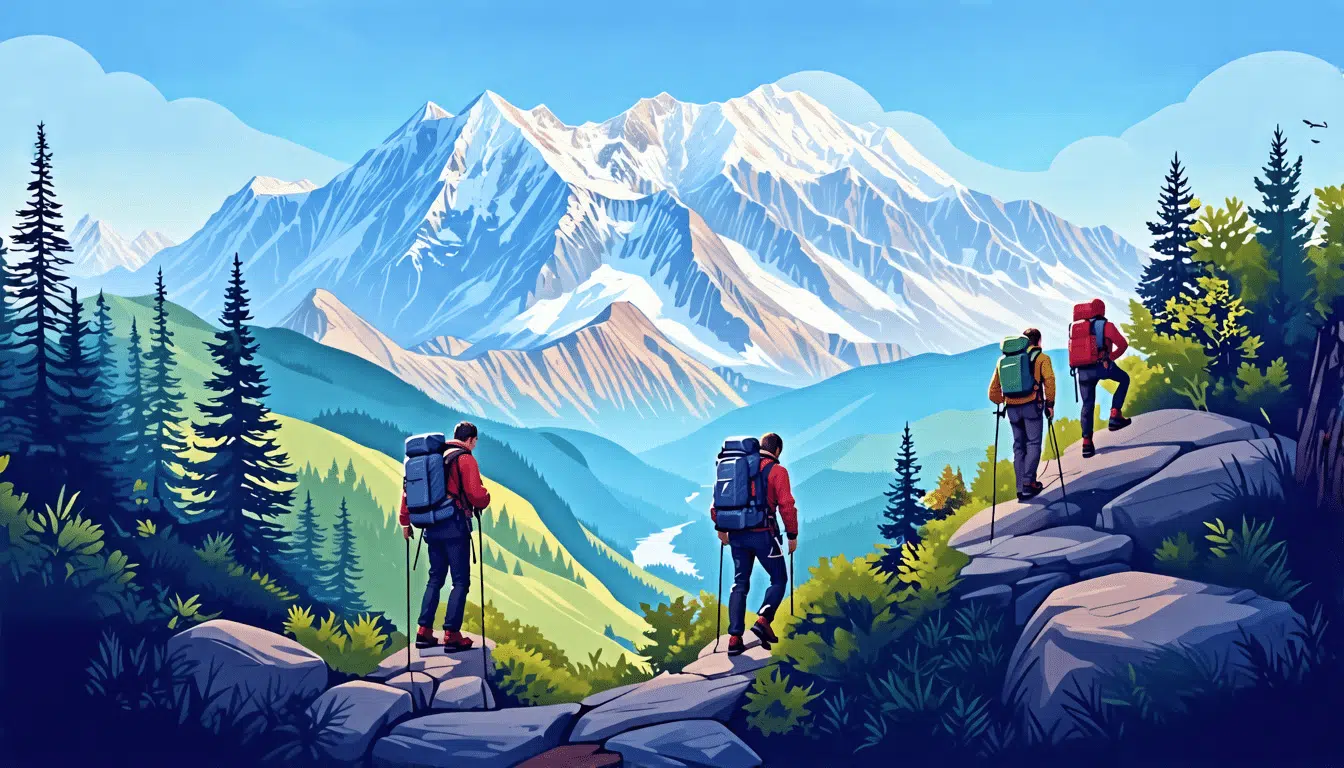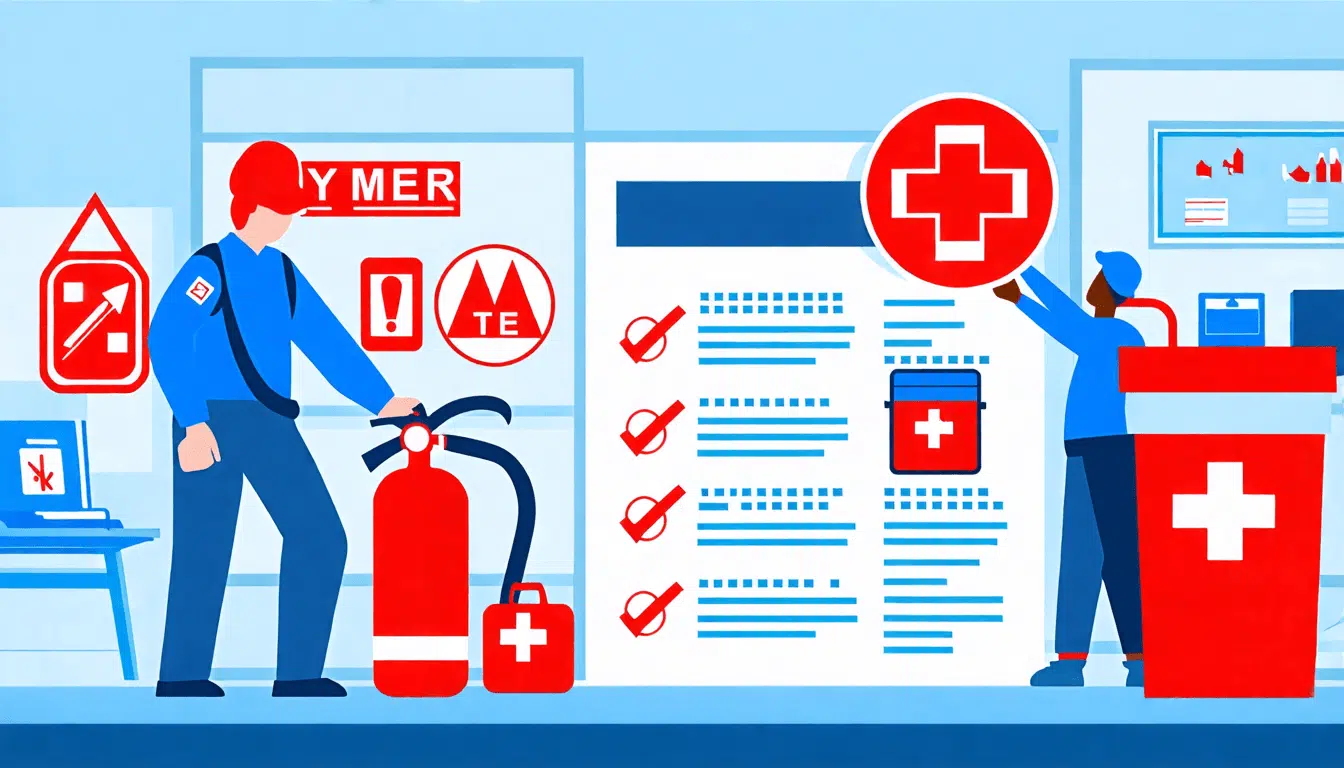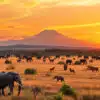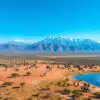Introduction to Climbing Mount Kenya
Ever wondered what it’s like to stand on top of Africa’s second-highest peak? Climbing Mount Kenya, the crown jewel of Kenya’s stunning landscapes, offers just that thrill. This majestic mountain, known for its rugged beauty and diverse ecosystems, isn’t just a climb; it’s an adventure that beckons the bold. Trust me, if there’s one climb that should be on your bucket list, this is it!
Brief Overview of Mount Kenya
Mount Kenya, peaking at 5,199 meters above sea level, is more than just a mountain—it’s a UNESCO World Heritage site. Nestled near the equator, it boasts an array of glaciers, alpine meadows, and intricate valleys. Not to mention, its varying altitudinal zones make it a haven for diverse flora and fauna. Picture this: lush forest at the base, which gradually gives way to bamboo, heath, moorland, and, finally, rock and ice. It’s practically nature’s kaleidoscope, right?
Historical Significance and Popularity Among Climbers
But there’s more! The historical significance of Mount Kenya is equally compelling. Local Kikuyu people revere it as the dwelling place of their god, Ngai. Famous figures like Halford Mackinder—the first recorded person to summit Batian, the highest peak—in 1899, have etched their names in the annals of mountaineering history. Since then, climbers from all corners of the globe have been drawn here, each seeking to conquer its challenging peaks and bask in the serene beauty. If you ask me, Mount Kenya is more than just rock and ice; it’s a spiritual experience.
Key Reasons to Consider Climbing Mount Kenya
So, why should you consider climbing Mount Kenya? For starters, it offers a unique climbing experience devoid of the crowds at Kilimanjaro. Imagine having majestic views, pristine trails, and the thrill of a lifetime, all to yourself! Plus, the diverse routes mean there’s something for everyone—whether you’re a seasoned climber or a newbie looking for a manageable yet rewarding trek.
Still pondering? Stick around because we’re diving deeper into how to prepare for the climb, the routes you can take, and crucial safety tips. Trust me; you’re in for one incredible adventure!
Introduction to Climbing Mount Kenya
Brief Overview of Mount Kenya
Have you ever found yourself daydreaming about scaling snowy peaks and standing amidst the clouds? Yeah, me too. Let me tell you a bit about Mount Kenya then. Located right in the heart of Kenya, this majestic mountain is the second-highest peak in Africa, after Kilimanjaro. It stands tall at 5,199 meters (17,057 feet) and offers a variety of scenic landscapes, from lush forests to rocky cliffs and glaciers. And trust me, it’s a sight to behold.
Historical Significance and Popularity Among Climbers
Did you know that Mount Kenya was originally an ancient volcano that erupted about 3 million years ago? Now, it’s one of the most breathtaking places for climbers around the world. The fascinating history doesn’t end there. The mountain is deeply rooted in Kenyan culture and is considered sacred by the Kikuyu people, who believe it to be the seat of their god, Ngai. It’s like walking through a living history book while you trek up the trails.
As for its popularity among climbers, the word on the slopes is that Mount Kenya offers an experience beyond just the climb. I mean, where else can you find classical tropical weather on one side and glaciers on the other? It’s a climber’s paradise, filled with diverse flora and fauna, including some species you won’t find anywhere else. You’ll often hear climbers swapping stories of the thrill and beauty they experienced on this mountain.
Key Reasons to Consider Climbing Mount Kenya
Alright, let’s get down to why you should consider making this epic climb. First off, if you’re into breathtaking landscapes, Mount Kenya delivers that in spades. Imagine walking through dense bamboo forests, then navigating alpine meadows before finally hitting icy glaciers. Talk about an Instagrammable journey, right?
But there’s more. Climbing Mount Kenya isn’t just about the physical challenge; it’s an emotional and mental journey. It teaches you perseverance, resilience, and provides a sense of achievement that’s hard to match. Plus, without delving too much into mountaineering jargon, let’s just say this climb can be as challenging or as easy as you want it to be, making it suitable for both novice and seasoned trekkers.
Also, who doesn’t like a bit of crowd-free adventure? Compared to the often-crowded Mount Kilimanjaro, Mount Kenya offers a more serene experience. It’s like having your own silent retreat with the backdrop of Africa’s most stunning vistas. Trust me, the peace and tranquility you’ll find here is something you’ll treasure forever.
Oh, and did I mention the wildlife? As you make your way up, you’ll likely encounter some unique animals like the rock hyrax, various bird species, and if you’re lucky, even the elusive Mount Kenya mole-rat. It’s like having a mini-safari during your climb.
Preparing for the Climb
Required Permits and Legal Considerations
Before you even start packing for your Mount Kenya adventure, there’s some paperwork to get out of the way. Climbing Mount Kenya isn’t as simple as showing up with your gear and going for it — you’ll need to secure the proper permits. This ensures you’re climbing legally and helps in the conservation efforts that keep the mountain both beautiful and sustainable for future adventurers.
First things first, you’ll need a Mount Kenya National Park permit. Trust me, you don’t want to skip this step; the last thing you want is to be halfway up the mountain and realize you’re not compliant with park regulations. You can obtain this permit from the Kenya Wildlife Service (KWS) offices or their website. It’s crucial to apply for your permit early, especially if you’re planning to climb during peak seasons.
Have you thought about insurance? Adventure insurance that covers high-altitude trekking can save you in sticky situations. Some policies even cover evacuation costs, which, let’s face it, can be astronomical.
Recommended Gear and Clothing for Different Seasons
Now, let’s talk gear. Picture this: you’re halfway up Mount Kenya and a sudden chill catches you off guard. Not fun, right? That’s why having the right gear is absolutely essential. First-time climbers might find this a bit overwhelming, so let’s break it down.
During the rainy season (March to May and October to December), waterproof gear is a must. Think high-quality rain jackets, waterproof pants, and durable boots. Trust me, no one wants to be soggy and cold miles up a mountain. For dry seasons (January to February and June to September), layering is your best friend. The weather can shift from sunny to freezing within a few hours.
What do I always pack? A good thermal base layer, a fleece jacket for insulation, and a down jacket for the summit push. And don’t forget your gloves and beanie. They may seem small, but these little accessories can make a huge difference. Trekking poles and a high-quality backpack with a rain cover also top the list. I once skipped the trekking poles and my knees have never forgiven me.
Physical and Mental Preparation Tips
Alright, let’s get real. Climbing Mount Kenya isn’t a walk in the park. This is a physically demanding endeavor that requires proper preparation. Cardio exercises like running or cycling can improve your stamina. Incorporate strength training, focusing on your legs and core; these muscles will be doing a lot of the heavy lifting.
Ever tried hiking with a loaded backpack? Start doing it. Your backpack is going to feel like an extra limb, and the sooner you get used to it, the better. Find local hills or trails and practice with a weighted backpack. Your back will thank you later.
Now, I know what you’re thinking: “What about mental preparation?” Ah, the unsung hero of mountaineering! A positive mindset can be just as important as physical preparation. I vividly remember a climb where the altitude started getting to me. I was tired, cold, and questioning my sanity. What got me through? Visualizing myself at the summit and maintaining a can-do attitude.
Set realistic goals and take it one step at a time. If you can, talk to folks who’ve climbed Mount Kenya before. Hearing their stories and tips can be incredibly motivating and give you a clearer picture of what to expect. Yoga and meditation can also help, providing mental clarity and focus which are crucial when the going gets tough.
So there you have it, a comprehensive guide to get you well-prepared for an unforgettable climb. Securing the right paperwork, packing the proper gear, and preparing both your body and mind will set you on the path to conquering Mount Kenya. Ready to start this adventure?
Popular Routes and What to Expect
Description of Major Climbing Routes: Sirimon, Chogoria, and Naro Moru
Alright, so you’re all set to take on Mount Kenya. Let’s dive into the routes that will get you to the summit. Each route on Mount Kenya has its own personality, offering unique experiences and challenges.
Sirimon Route: This is probably the most popular route due to its gentle slopes and stunning scenery. You’ll start from the northwest side of the mountain, passing through montane forest and moorland. Picture this: you’re hiking under a canopy of ancient trees, the air filling with the fresh scent of pine, and suddenly the forest opens up to vast moorlands filled with heather and giant lobelias. Basically, Sirimon is a nature lover’s dream.
Chogoria Route: If you’re all about breathtaking views, this is the route for you. Starting on the eastern side, Chogoria’s landscape is dramatic with gorges, waterfalls, and cliffs. Talk about a visual feast! As you hike, you come across Lake Michaelson, where you might just want to pause and soak in the beauty. This route is longer and a bit more challenging, but those panoramic views? Totally worth it.
Naro Moru Route: Known for being the quickest way to Point Lenana, especially if you’re short on time. However, it’s not without its challenges. The infamous Vertical Bog will test your persistence as you navigate the steep, muddy sections. Picture yourself trudging through with your boots getting heavier with every step. But don’t worry, the sense of accomplishment when you make it through is hugely rewarding. Once you clear the bog, it’s smooth sailing towards the summit.
Challenges and Highlights of Each Route
Now, let’s talk about what you might face on these treks. Highlights are easy to find – the scenery, wildlife, and the sheer beauty of Mount Kenya itself. But challenges? Those are real and should not be underestimated.
Sirimon Route: The biggest challenge here is the cold, especially at higher elevations. Layers are your best friend. But the highlight? Definitely the Liki North Hut and Shipton’s Camp. Waking up to a sunrise at these campsites, with the mountain bathed in morning light, is a memory you’ll treasure forever.
Chogoria Route: Challenges include the length of the hike and the variable weather. You might start in sunshine only to be hit by a sudden rainstorm. Always be prepared. The highlight is, without a doubt, the diverse terrain. From lush forests to rocky ridges, every day feels like an entirely new adventure.
Naro Moru Route: As mentioned earlier, the Vertical Bog is the most challenging part. It’s wet, slippery, and exhausting. But remember, it’s mind over matter. The view from Mackinder’s Camp will lift your spirits. You can see the peaks looming ahead, and the excitement builds as you get closer to your goal.
Accommodations and Campsites Along the Routes
When it comes to resting your head after a long day of climbing, Mount Kenya doesn’t disappoint. Here’s what you can expect:
Sirimon Route: Old Moses Camp is your first stop, offering basic accommodations but a warm place to sleep. Further up, there’s Shipton’s Camp, sitting snugly at the base of the peaks. The campsites along this route are well-maintained and provide essential facilities.
Chogoria Route: Meru Mount Kenya Bandas is a luxury you might not expect on a mountain climb. Before you reach Lake Michaelson, you can stay here in comfort with actual beds and showers. Closer to the summit, find Hall Tarns where you can camp by the tarns (small mountain lakes), enjoying some serenity before the final push.
Naro Moru Route: Met Station is the first major stop and is considered a bit more luxurious compared to other camps. It offers dormitory-style accommodation, which is great for mingling with fellow climbers. Higher up, Mackinder’s Camp gives you a cozy refuge as well as the best point for acclimatization before your summit attempt.
So, as you plan your ascent, consider not just the route but the experience you want. Are you in it for the fastest summit or the most visually stunning journey? Whichever you choose, Mount Kenya promises an adventure of a lifetime. Ready to lace up those hiking boots?
Safety Tips and Environmental Impact
Safety Precautions and Emergency Procedures
When it comes to safety on Mount Kenya, you can’t be too careful. Let me tell you about my friend, Jane, who climbed the mountain last year. She felt ready, but a twist of the ankle at 4,000 meters reminded her of the importance of preparation. Doing a few things beforehand can help you avoid sticky situations.
First off, never underestimate the power of a good first-aid kit. Include essentials like bandages, antiseptics, and pain relievers. Trust me, it’s better to carry it and not need it than to be without it when you do. Also, consider bringing altitude sickness medication—better safe than sorry, right?
Stay informed about the weather. It can change quicker than you’d believe, especially at higher altitudes. Always check the forecast before you set out and be prepared for sudden changes. Layering your clothing is your friend—think base, mid, and outer layers to adjust quickly to temperature swings.
Hiking with a buddy or a group is not just more fun but also safer. If anything goes wrong, having someone there to assist can make a world of difference. And don’t forget to register with the park authorities. This helps them keep track of every hiker, and in case of an emergency, they’ll know to look for you.
Environmental Conservation Practices for Climbers
Let’s talk about the beautiful environment of Mount Kenya. It’s an ecological treasure, and with great beauty comes great responsibility! We all have a role to play in preserving this natural wonder for future adventurers.
First, adopt the Leave No Trace principles. Everything you bring with you should leave with you, including food wrappers and other waste. I once saw a hiker pick up trash left by someone else, and that small act left a big impression on me.
Sticking to the trails is crucial. Venturing off-path can cause soil erosion and harm vegetation. Plus, let’s be honest, it’s easy to get lost. Using established campsites minimizes your impact on the environment. Remember that these are shared spaces; keep them clean for the next group.
It’s also a good idea to use eco-friendly products. Biodegradable soap and toothpaste won’t harm the local water sources. This small change can have a significant impact on the pristine environment.
Importance of Sustainable Tourism and Supporting Local Communities
When we talk about climbing Mount Kenya, we’re not just discussing a physical challenge. We’re also referring to the local communities that make this experience possible. Supporting them means respecting their land and culture, and also contributing to their economy.
Hiring local guides is a win-win. They know the mountain like the back of their hands and provide you with an enriching experience. Plus, it ensures that the money you’re spending stays within the local community. I remember my guide, Tito, who shared incredible stories and invaluable tips, making my climb unforgettable.
Buying food and souvenirs from local vendors also goes a long way in sustaining their livelihood. Something as simple as purchasing local honey or woven crafts can make a significant difference.
Why not consider contributing to community projects? Some organizations focus on education, health, and environmental conservation within the local areas near Mount Kenya. Your contribution, no matter how small, can help ensure these communities thrive alongside their beautiful natural surroundings.
So, as you lace up your boots and pack your bags for the climb of a lifetime, remember these safety tips, conservation practices, and ways to support local communities. By doing so, you’ll not only have an incredible adventure but also help preserve this magical place for generations to come. And who knows, maybe you’ll even come back with a few fascinating stories of your own to share.
Conclusion
As we wrap up this guide to climbing Mount Kenya, it’s abundantly clear that this adventure is not just another tick on your bucket list. It’s an immersive experience that blends physical challenge, natural beauty, and a deep sense of accomplishment. Whether you’re navigating the lush Sirimon route, marveling at the dramatic landscapes on the Chogoria trail, or powering through the steep inclines of Naro Moru, every step is a story waiting to unfold.
Remember, preparation is key. Those permits might seem like red tape, but they ensure the preservation of this magnificent ecosystem. Your gear and clothing will be your best friends once you’re out there facing unpredictable weather patterns. And let’s not forget, mental readiness can make or break your climb — because when you’re halfway up and questioning life choices, a positive mindset can be your saving grace.
The beauty of Mount Kenya lies not only in its stunning vistas but in the journey itself, the people you meet, and the shared reverence for this majestic peak. It’s crucial to respect safety guidelines and tread lightly to lessen your environmental footprint, honoring the delicate balance of nature. After all, sustainable tourism isn’t just a buzzword; it’s our collective responsibility.
In essence, climbing Mount Kenya is more than a physical feat. It’s an opportunity to connect with nature, challenge your limits, and become a part of a global community of climbers who cherish and protect this extraordinary mountain. So, lace up those hiking boots, pack your sense of adventure, and get ready to create memories that will last a lifetime. Anyone else feeling the urge to start planning their trip right now?


